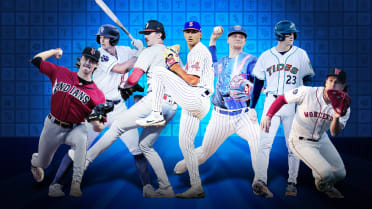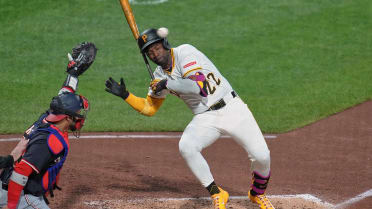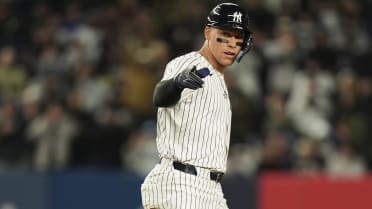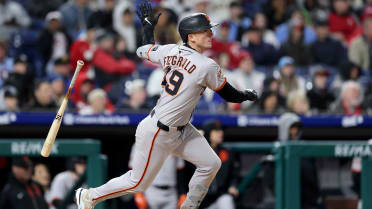This story was excerpted from Jordan Bastian’s Cubs Beat newsletter. To read the full newsletter, click here. And subscribe to get it regularly in your inbox.
As Ian Happ became a more established hitter in the Major Leagues, growing into a regular part of the Cubs’ lineup and reaching All-Star status last year, the outfielder started to notice things changing in front of him as he stepped into the box and surveyed opposing defenses.
“I definitely started to notice myself getting shifted,” Happ said during Cubs Convention in January. “Did the game change? Or did they just have more information on me? I don't know.”
The answer to that question is simply, “yes.” The game changed over the past several seasons as available data on players increased in both volume and specifics. But Major League Baseball is now trying to strike a balance between embracing the information age while still producing the type of product that baseball fans crave.
Starting in 2023, MLB is eliminating the kinds of drastic defensive shifts that were becoming more commonplace and impacting offense. The new guidelines require at least four infielders (on the dirt) with at least two infielders on either side of second base. No infielders are allowed to switch sides, and no four-man outfields are permitted.
“I think a lot of us are really looking forward to that,” new Cubs first baseman Eric Hosmer said. “It just kind of seems like there's going to be more hits out there for guys. There's no worse feeling than hitting the ball hard up the middle and seeing the shortstop standing right there. So maybe this could be better for the offensive player, especially the left-handed hitter.”
It should be noted here that infielders could still be positioned far enough toward the middle to still reach balls hit in the direction of second base and center field. What likely will happen more often is balls hit to shallow right by a lefty batter will drop in for a hit.
The upcoming spring slate will provide the initial testing ground for how this plays out.
“I don't know exactly how the infields are going to look now,” new Cubs center fielder Cody Bellinger said. “I know that's probably what we'll knock out Spring Training, getting used to it. But, it's definitely exciting, as a left-handed hitter, I'd imagine.”
MLB.com analyst Mike Petriello has examined how the shift could help and hurt some batters around the Majors in ’23. With the caveat that this is not an exact science -- these projections do not factor in batted-ball luck or changes in approach, for instance -- Mike sent over some numbers on how the shift rules could impact the Cubs.
His calculations gave Happ (a switch-hitter) an extra seven hits from the left side. Last year, Happ saw a shift rate of 62% (up from 57.4% in ’21), and he had a .338 wOBA with no shift, compared to .330 with a shift on. Happ is the only real notable case from ’22, especially for a Cubs team that saw the fourth-lowest shift rate vs. lefty batters in MLB.
Among the newcomers, Bellinger (shifted more than 90% of the time from 2020-22) gains four hits, while Hosmer gains three hits. It should be pointed out that Hosmer was shifted only 16.7% of the time, though he did have a notable difference with no shift (.323 wOBA) vs. with a shift on (.266 wOBA) in ’22.
Really, the coming rule changes may impact the Cubs less on the offensive front and more defensively, especially with the newly formed, athletic up-the-middle combo of Dansby Swanson and Nico Hoerner. Either way, it sounds like the players are on board with what MLB is trying to accomplish.
“I think it's going to be an exciting brand of baseball,” Happ said. “There's going to be hiccups [early in the season] … but I think we're going to look back and say this is a better baseball experience."
Senior Reporter Jordan Bastian covers the Cubs for MLB.com. He previously covered Cleveland from 2011-18 and Toronto from 2005-10. Subscribe to his Cubs Beat newsletter.




